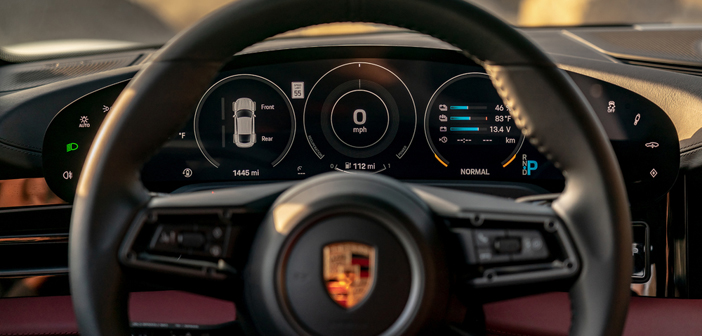Porsche’s first fully electric vehicle, the Taycan, features software developed by the ICT Group in the instrument cluster and in the operation of touch panels for comfort functions.
The instrument cluster is displayed on a large, curved LCD screen located behind the steering wheel. Porsche Taycan drivers can use control buttons on the steering wheel to select the information they want to see on the cluster in addition to the speedometer. This includes meters that show how fast the car is accelerating, battery status and a navigation screen. In total the cluster offers some 30 applications with screens.
ICT Group developed the software for the applications that efficiently retrieve, process and display information from a large number of other sub systems embedded in the sports car. The company says that prioritization as well as fast and reliable availability of data are essential requirements for the instrument cluster.
It also developed the software required for two touch panels that operate the comfort functions in the center console. The touch panel with haptic feedback is located in front of the center armrest and enables the driver to access functions such as the phone, radio and navigation without having to move his or her hand to the main instrument panel. Rear-seat passengers have their own touch-panel controls.
ICT Group says it was chosen for the Taycan because of its extensive experience with the AUTOSAR standard, which offers a platform for embedded software development, as well as of the Volkswagen Group-specific BAP communication protocol.
“We have already shown our knowledge of both standards and our ability to integrate them,” said Eeuwke Wielinga, R&D engineering director at ICT Group.
“What’s more, we have proven that our work processes are in compliance with the Automotive SPICE standard and take into account functional safety requirements in accordance with ISO 26262. This is a requirement in order to be permitted to develop automotive-grade software for the automobile industry.”



